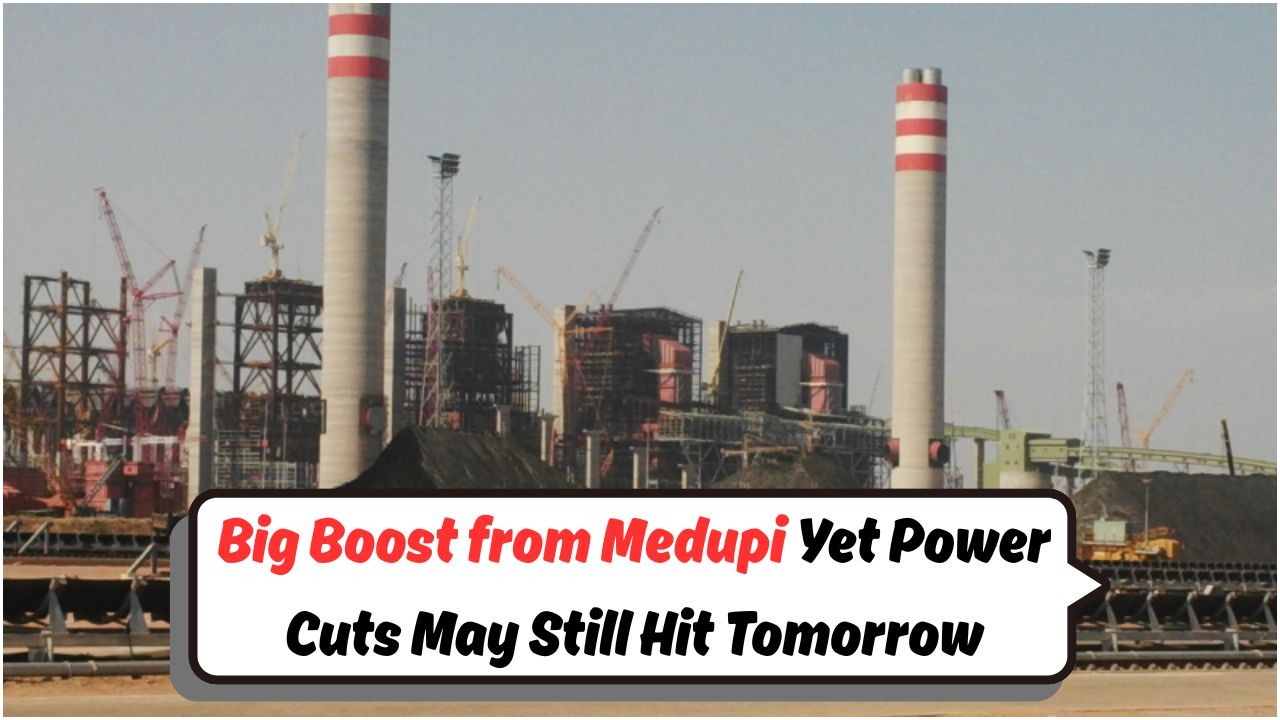Medupi’s July Power Surge: South Africa has long grappled with the challenges of loadshedding, and the Medupi Power Station’s recent surge in July brings a glimmer of hope. As the nation steps into a week where power cuts are expected to loom large, many are wondering if the increased output from Medupi can mitigate the impact of these outages. The Medupi Power Station, located in Limpopo, has been a key player in South Africa’s power generation landscape, and its performance this month could play a crucial role in stabilizing electricity supply. With the nation’s economy and daily activities heavily reliant on consistent power, the stakes are high. Can Medupi’s enhanced productivity offer a reliable buffer against the planned loadshedding? Let’s dive into the details to understand the potential impact and what it means for South Africans this week.
Understanding Medupi’s Role in South Africa’s Power Supply
The Medupi Power Station is one of the largest coal-fired power plants in the world and plays a significant part in South Africa’s energy matrix. It was designed to bolster the country’s electricity generation capabilities and reduce the frequency of power cuts that have been a recurring issue. The recent power surge in July is a testament to its increased efficiency and output capacity. However, to comprehend its full impact, it’s essential to look at its capacity and operational strategy.
- Medupi contributes approximately 4,800 megawatts to the national grid.
- It is equipped with six generating units, each capable of producing 800 megawatts.
- The plant’s advanced dry-cooling technology helps in reducing water usage, crucial for the water-scarce region of Limpopo.
- Medupi’s full operational status has been achieved over several phases, with the final unit completed in recent years.
- The station’s design and technology aim to improve environmental performance and reduce carbon emissions.
- Continuous upgrades and maintenance are part of its operational ethos to ensure reliability.
- Medupi’s strategic location in Limpopo supports regional energy distribution and stability.
The Current State of Loadshedding in South Africa
| Stage | Power Cut Frequency | Duration |
|---|---|---|
| Stage 1 | Once a day | 2 hours |
| Stage 2 | Twice a day | 2 hours each |
| Stage 3 | Thrice a day | 2 hours each |
| Stage 4 | Four times a day | 2 hours each |
| Stage 5 | Five times a day | 2 hours each |
| Stage 6 | Six times a day | 2 hours each |
| Stage 7 | Seven times a day | 2 hours each |
| Stage 8 | Eight times a day | 2 hours each |
Will Medupi’s Power Surge Alleviate Loadshedding?
The July power surge at Medupi offers a potential reduction in the severity of loadshedding, but its success depends on various factors. The national grid system is complex, and while Medupi contributes significantly, other power stations and renewable energy sources are also pivotal. Here are some aspects to consider when evaluating Medupi’s impact on loadshedding:
- Operational efficiency of other power stations across the country.
- Integration of renewable energy sources like wind and solar.
- Demand-side management and energy-saving initiatives by consumers.
- Infrastructure and maintenance of the national grid.
- Government policies and investments in energy development.
Strategies to Cope with Loadshedding
While Medupi’s enhanced output is a positive development, loadshedding remains a reality that South Africans must navigate. Here are some strategies to mitigate its impact on daily life:
 Thousands Stranded by August NSFAS Blockages: Discover the Viral R5,200 WhatsApp Hack to Solve It
Thousands Stranded by August NSFAS Blockages: Discover the Viral R5,200 WhatsApp Hack to Solve It
- Invest in alternative energy sources such as solar panels or generators.
- Utilize energy-efficient appliances and LED lighting to reduce consumption.
- Stay informed about loadshedding schedules to plan activities accordingly.
- Implement home insulation techniques to maintain temperature without relying on electrical heating or cooling.
- Encourage community initiatives to share resources and support each other during power cuts.
The Economic Impact of Loadshedding on South Africa
Loadshedding has a far-reaching impact on South Africa’s economy, affecting businesses, industries, and households. The unpredictability of power cuts can disrupt manufacturing processes, reduce productivity, and lead to financial losses. Small businesses, in particular, are vulnerable, as they often lack the resources to invest in backup power solutions. The tourism sector also feels the pinch, as visitors expect reliable infrastructure. Moreover, educational institutions struggle with digital learning during outages, impacting student performance. As the nation strives for economic recovery and growth, addressing the root causes of loadshedding is critical for long-term stability.
- Manufacturing delays and increased operational costs.
- Loss of business revenue and customer dissatisfaction.
- Impact on daily commuting and public transport services.
- Challenges in digital connectivity and remote working environments.
- Increased reliance on costly backup power solutions.
The Future of South Africa’s Energy Landscape
| Energy Source | Current Contribution | Future Potential |
|---|---|---|
| Coal | 70% | Reduced dependency |
| Renewables | 10% | Increased integration |
| Nuclear | 5% | Stable contribution |
| Hydro | 5% | Moderate growth |
| Gas | 10% | Potential expansion |
| Wind | 2% | Significant increase |
| Solar | 3% | Major growth |
Steps to Enhance Energy Security
To improve energy security and reduce the dependency on loadshedding, South Africa must adopt a multi-faceted approach. This includes investing in renewable energy sources, enhancing the efficiency of existing power plants, and modernizing the grid infrastructure. Encouraging private sector involvement in energy production and fostering innovation in energy storage solutions are also critical steps. Moreover, government policies should focus on incentivizing energy-saving practices and supporting research in sustainable technologies.
- Investment in renewable energy projects.
- Upgrading and maintaining existing power infrastructure.
- Promoting energy conservation and efficiency.
- Encouraging public-private partnerships in energy development.
- Implementing policies for sustainable energy growth.
FAQ: Medupi’s Impact on Loadshedding
Can Medupi prevent loadshedding entirely?
No, while Medupi’s output enhances the power supply, it cannot completely prevent loadshedding due to the overall demand and supply dynamics.
What are the alternative energy solutions available?
Solar panels, wind energy, and gas generators are popular alternatives to supplement energy needs during loadshedding.
How does loadshedding affect small businesses?
Loadshedding causes operational disruptions, financial losses, and increased costs for backup solutions, impacting profitability.
Why is renewable energy important for South Africa?
Renewable energy sources reduce reliance on coal, lower carbon emissions, and provide sustainable and cleaner energy options.
 Eastern Cape School Shuts Down Amid #JusticeForCwecwe Uproar: Parents Call for Immediate Action
Eastern Cape School Shuts Down Amid #JusticeForCwecwe Uproar: Parents Call for Immediate Action
What can individuals do to mitigate the effects of loadshedding?
Individuals can invest in energy-efficient appliances, stay informed about schedules, and use alternative energy sources to reduce reliance on the grid.









